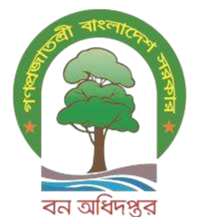বর্তমান অবস্থা
Introduction:
Bangladesh is composed of a patchwork of complex and species-rich ecosystems. These are in generic terms: Hill ranges; Evergreen and semi-evergreen forests; Dry-deciduous and moist deciduous forests; Grasslands; Reedlands; Floodplains; Rivers; Low-lying islands(Charlands); Ox-bow lakes (Baors); River back swamps (Haors); Open woodlands (Village groves); Low-lying deep depressions (Beels); Ponds/canals/ditches; Estuarine; Coastal mudflats, Coastal islands; Mangrove swamps; one coral-bearing island; and marine ecosystems.
Status:
Bangladesh is a biodiverse country. There are an estimated 133 species of mammals, 711 birds, 173 reptiles, 64 amphibians, 653 freshwater fishes, 185 crustaceans and 323 butterflies in Bangladesh, to name a cursory few from a list that grows year on year with research. Bangladesh does not have any endemic species, being a continental country with habitat types contiguous with its neighbours.
The IUCN Red list of Bangladesh (2015) assessed 1,619 species of Bangladesh of which 31 species (2%) were Regionally Extinct, 56 species (3.45%) were Critically Endangered, 181 species (11.18%) were endangered, 153 species (9.45%) were Vulnerable, 90 species (6%) were Near Threatened and 802 species (50%) were Least Concern. The IUCN Red list of Bangladesh found 38 mammals, 39 birds, 38 reptiles, 10 amphibians, 64 freshwater fishes, 13 crustaceans and 188 butterflies are threatened throughout the country.
The Encyclopedia of Flora and Fauna of Bangladesh (2007-2009) contains a comprehensive list of plant species of Bangladesh. It recorded 3,611 taxa of angiosperms from the Bangladesh territory. It has recently been noted that, between June 2009 and June 2013, 64 angiosperm species were recorded from Bangladesh and 8 were described as new to science. In addition to that, very recently, Bangladesh National Herbarium has reported 40 angiosperm species (2015) as new records for the country.


